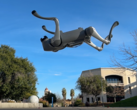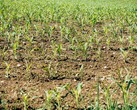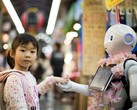Tesla CEO Elon Musk envisions ambitious goals for the company’s humanoid robot. Currently deployed in Tesla factories for tasks like sorting battery cells, Optimus is expected to enter mass production soon, with the potential to transform the workforce. Recently, the robot has made significant progress toward this vision.
A new video on X (formerly Twitter), shared by Milan Kovac, Tesla’s Vice President of Optimus Engineering, showcases the AI-driven robot navigating uneven terrain independently, a challenge even for humans. Kovac himself admitted to having slipped on mulched ground in the past. In the video, Optimus climbs and descends a hill, its movements slightly stiff but steady. Notably, around the 30-second mark, the robot slips yet manages to regain its balance.
What’s remarkable is that the humanoid robot currently relies solely on onboard sensors and neural networks to navigate, without any visual input. Despite being "blind," Optimus can walk steadily over uneven terrain. According to Kovac, the robot processes sensor data within just two to three milliseconds to maintain balance and coordinate its movements. Future upgrades, including visual systems, are expected to enhance its stability even further. Tesla also plans to develop a more natural walking style, improved fall recovery and the ability to stand up independently.
Community still in disbelief
Many users on X have expressed admiration for the technological advancements. However, progress with Optimus is still clouded by earlier criticism. During a previous presentation, the robot was reportedly remote-controlled rather than operating autonomously, sparking skepticism within the community about Tesla's transparency.
Source(s)
X (formerly Twitter / Milan Kovac)



































